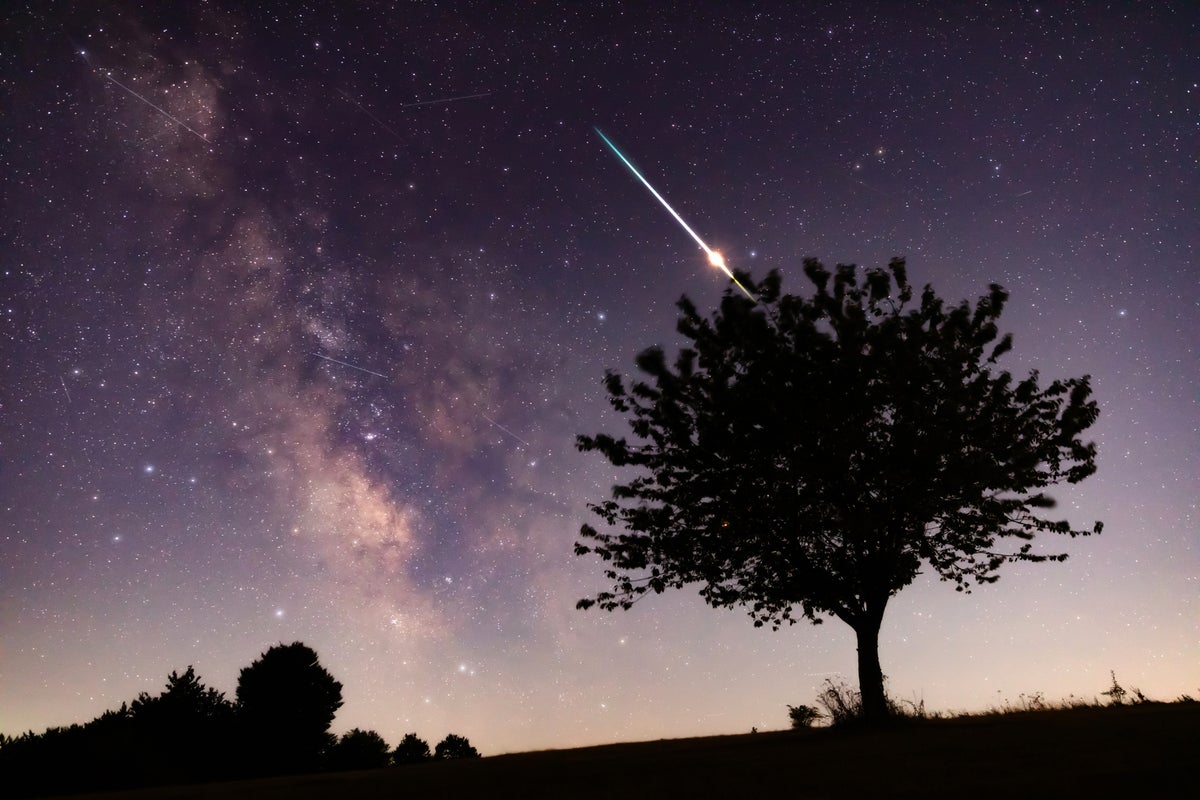Aliens are visiting our solar system.
Not little green men, sadly, but natural alien objects—cosmic bodies such as comets and asteroids born elsewhere in the galaxy that zip by the sun as they drift through the Milky Way. They’re not so much visiting as just passing through.
Though these objects were speculated to exist for a long time, we didn’t know they were out there for sure until October 2017, when astronomers noticed a small body moving through space at exceptionally high speed. Observations over just a few nights showed it was moving far too quickly to be orbiting the sun and thus must have come from some other star. It was our first known interstellar visitor.
On supporting science journalism
If you’re enjoying this article, consider supporting our award-winning journalism by subscribing. By purchasing a subscription you are helping to ensure the future of impactful stories about the discoveries and ideas shaping our world today.
Eventually designated 1I/‘Oumuamua, it was 30 million kilometers from Earth and already outward bound from the solar system when it was discovered, offering scant time for follow-up studies. But then, less than two years later, a second such object was found, also moving far faster than usual. 2I/Borisov turned out to be a comet very similar to those we’re familiar with, except for its trajectory, which clearly showed it came from interstellar space.
And now a third such alien body is barreling through the solar system: 3I/ATLAS, moving so rapidly its path is barely bent at all by the sun’s gravity as it zooms past.
In science, one is an anomaly and two might be coincidence, but three is a trend. Clearly, objects like this are passing by on the regular. Roughly speaking, there could be ones 100 meters in size or larger passing through the inner solar system at any time. Given their speed and intrinsic faintness, though, they’re difficult to detect.
We also know that when it comes to things such as asteroids and comets, nature tends to make many more smaller ones than bigger ones. In our own solar system, for example, only a couple of dozen main-belt asteroids are bigger than 200 km wide, but more than a million are 1 km across or larger.
This generalization should hold for interstellar interlopers as well. For every kilometer-scale one that we see, there should be far more that are smaller. In fact, there could be millions of sand-grain-sized alien objects whizzing past us right now.
And we already know that they’re out there: in 2014 astronomers announced they had found seven grains of cosmic dust brought down to Earth from the Stardust space probe, which was designed to catch material ejected from a comet. Also, embedded in some meteorites that have hit Earth are tiny bits of material, called presolar grains, that are so old they actually formed around other stars. They got here after being blown across the void of space into the collapsing cloud of gas and dust that formed the sun and planets 4.6 billion years ago. Larger material could be ejected from an alien planetary system if it’s given a gravitational assist when passing by a planet there, or it could be torn away from its parent star by another star passing closely to that system.
So it seems certain interstellar jetsam would occasionally hit our planet. Earth is a small target, but with so many galactic bullets, you’d think some would actually find their way to our planetary bull’s-eye.
The problem is detecting them. Every day Earth is hit by very roughly 100 tons of locally grown interplanetary debris—material ejected from asteroids and comets native to our solar system—which translates into billions of tiny specks zipping across our sky daily. Detecting the tiny fraction that have an interstellar origin is tough.
And the difficulty is not just in the sheer numbers. It’s in tracing the trajectories of that small handful across the sky back up into space to calculate their orbits.
When an object such as a planet or an asteroid orbits the sun, we say it’s gravitationally bound to our star. That orbit in general is an ellipse, an oval shape. These can be defined mathematically, with the key factor being the eccentricity: how much the ellipse deviates form a circle. A perfect circle has an eccentricity of 0, and the higher the eccentricity, the more elliptical the orbit, up to a value of just under 1. An orbit with an eccentricity of 0.99, say, is extremely elongated; you might find that an object dropping down very close to the sun from the outer solar system has an eccentricity that high.
It’s possible to have an eccentricity higher than 1 as well. That kind of trajectory is called hyperbolic—named after the mathematical curve, not because it’s exaggeratedly over-the-top—and an object on this path is not bound to the sun gravitationally. Once it’s heading out, it’s gone forever. It ain’t coming back.
This is how we know ‘Oumuamua, Borisov and ATLAS are from interstellar space; each has an eccentricity greater than 1—‘Oumuamua’s is about 1.2 and Borisov’s 3.4, which is quite high, but ATLAS has them both beat with an astonishing eccentricity of 6.2. That’s extraordinarily high and also indicates it’s hauling asteroid (or, more accurately, it’s not comet back).
Do we see any meteors with eccentricities like these?
If the exact path of a meteoroid (the term for the solid bit that burns up in the air and becomes a meteor) through Earth’s atmosphere can be determined, that can be backtracked up into space, allowing the object’s trajectory, including its eccentricity, to be calculated. This can be done with multiple sky cameras set up in various locations; if a meteor streaks across their field of view, the multiple vantages can allow astronomers to triangulate on the rock and measure its path.
There are quite a few such camera networks. It’s actually difficult getting good enough data to determine solid orbits for meteoroids, though. Many do have eccentricities very close to 1; these likely come from long-period comets that originate out past Neptune.
NASA’s Jet Propulsion Laboratory maintains a database of bright fireballs—exceptionally luminous meteors—at the Center for Near-Earth Object Studies (CNEOS). The earliest recorded meteors in the database date back to 1988, so there is a rich hunting ground in the data. Are any of the meteors listed hyperbolic? Unfortunately, no. At least, not unambiguously—there have been false positives but nothing clear-cut.
Additionally, a study from 2020 looked at 160,000 measurements by the Canadian Meteor Orbit Radar covering 7.5 years. The researchers found just five potential interstellar meteors. The results aren’t quite statistically strong enough to claim detections for sure, but they’re very compelling.
What we need are more eyes on the sky, more meteor camera networks that can catch as many of these pieces of cosmic ejecta burning up in our atmosphere as possible. It’s a numbers game: the more we see, the more likely we’ll see some that are not from around here. The science would be, well, stellar: these meteors can tell us a lot about the environments around other stars, the ways they formed and perhaps even the stars they come from.
We’re getting physical samples from the greater galaxy for free. We should really try to catch them.
Hat tip to planetary scientist Michele Bannister for the link to the CNEOS article.


